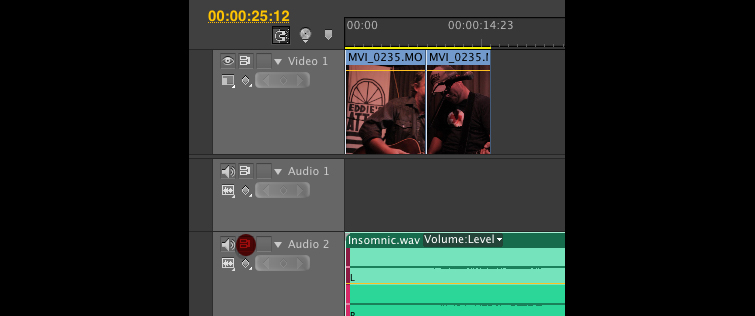
10 Premiere Pro Tips for FCP Editors
These 10 tips are geared toward the FCP editor and will you get up to speed quickly with the nuances and new features in Premiere Pro CS6!

Maybe you’ve come to Premiere Pro from Final Cut Pro or you’re a former Premiere editor looking to take advantage of the new features in CS6…
In this post we’ll break down some of the changes in CS6, as well as offer up a few tips to make you a more successful Premiere Pro video editor!
1. Setting Project & Scratch Disk
Personally, I save my media/projects to a folder on my media drive (fastest drive). I put my Premiere Auto Saves & Previews/Renders on a separate drive and back up the projects to Dropbox daily. Whatever strategy you choose, please back up your project! If you forget or need to change your scratch after launching the project, go to Project>Project Settings>Scratch Disk to make modifications.
Post Haste is a free software application that will help you with this file organization. It creates a folder structure for you, and you can modify the defaults and create your own templates.
An additional resource is this handy guide for disk setups on the Adobe forums.


2. Workspace Shortcuts
Creating workspace shortcuts will speed up your editing work. My rule of thumb is to make a shortcut for anything you use on a daily basis.
Here’s a general guide to customizing shortcuts in Adobe Premiere Pro that’s worth a look. A few of the workspace shortcuts I use religiously:
Control + U – Reset my current layout when it gets disorganized and messy
Command + 1 – Audio Workspace
Command + 2 – Color Correction Workspace
Command + 3 – Editing Workspace
3. Working with Clips in a Sequence
By default when you drag a clip into a Sequence from the Source Window you perform an Overwrite Edit. If you’d like to perform an Insert Edit instead (pushes other clips down the timeline) hold Command (MAC) or Control (PC) when you drag the clip to the sequence.
Often you will want to rearrange the order of clips in a Sequence. Select the clip, drag the clip to a new location, then hold Command/Control + Option/Alt before you let go of the mouse (make sure snapping is turned on). This is called a Swap Edit.
4. Maximize Window Shortcut
Enlarge the window you’re working in by placing your cursor over the window you want to maximize and press tilde (below the escape key). Press it again and it reverts back.
I use this constantly.
5. Render from “In and Out”
The work area defines what clips and effects are rendered. I prefer to use “in and out” instead, as this is a standard editing convention. This setting is in the Sequence Menu pulldown. When you change this, it also changes the Sequence Menu settings to “in & out” instead of work area.

Here’s two Premiere Pro render shortcuts that are worth memorizing and using!
Render In/Outs – Command + R
Render Effects – Option + R
6. Show Audio Time Units
This lets you work with audio in smaller increments – particularly helpful when removing a pop or other audio issue. In the Timeline Menu pull down select “Show Audio Time Units”.
You can read more on this here.

7. Clip Usage in Sequences
There’s a quick way to find out where and how many times a video clip has been used in a Premiere Pro sequence. If you select a clip in the project window, at the top of window to the right of the thumbnail viewer, you will see details about the clip, including how many times it has been used in a sequence. If you click on the “clip usage” pulldown, select the instance of the clip you want to see and it will open that sequence if it is in multiple sequences. This is a handy way to find clips.

8. Change Track Height
In FCP 7 you could change the track height in the Timeline of video & audio tracks with the shortcut Shift +T or by clicking the Toggle Timeline icon. In Premiere Pro you can assign a shortcut to increase/decrease the video/audio track height (unfortunately however it’s not a toggle).
You can use the FCP shortcut of Shift +T, but it conflicts with the default “Reveal Nested Sequence”. Instead, I use Cmd + H to increase track height and Option + Command + H to decrease track height. Note: The tracks have to be expanded for this to work successfully.
9. Sync Lock
Uncheck Sync Lock when you want a Premiere Pro track to stay in place. A common use for this is when you don’t want your music track to get pushed down when you perform an Insert Edit. See the highlighted sync lock button below.
By default Insert Edit will push all tracks down unless Sync Unlock is off or the track is locked.

10. Creating Markers
To create a marker in a Premiere Pro sequence, use the shortcut “M”. You can see your markers in the markers Panel, change their length and add comments (very useful for adding editing or producers notes).
To create a marker on a clip, load the clip into the Source Window & press “M”. The Marker Panel with show sequence markers if the Sequence is selected, or clip markers if the Source is selected.
Selecting the Marker in the Marker Panel will take you to the marker in the clip or sequence – a big Premiere Pro timesaver!

BONUS TIP: Using Hover Scrub
Premiere Pro CS 6 defaults to Icon view, instead of list view like previous versions. Put your cursor over an icon, and the clip will play backwards or forwards as you drag your mouse. If you click on the clip you you get a yellow bar (shows the “in & out” points) and a playhead.
You can drag the playhead, or use the J, K or L shortcuts to play the clip. You can set in & out with I & O.
The filmstrip icon indicates clip usage in the project and the waveform icon indicates the clip has linked audio.

Got a Premiere Pro tip to share?
Share it in the comments below!






